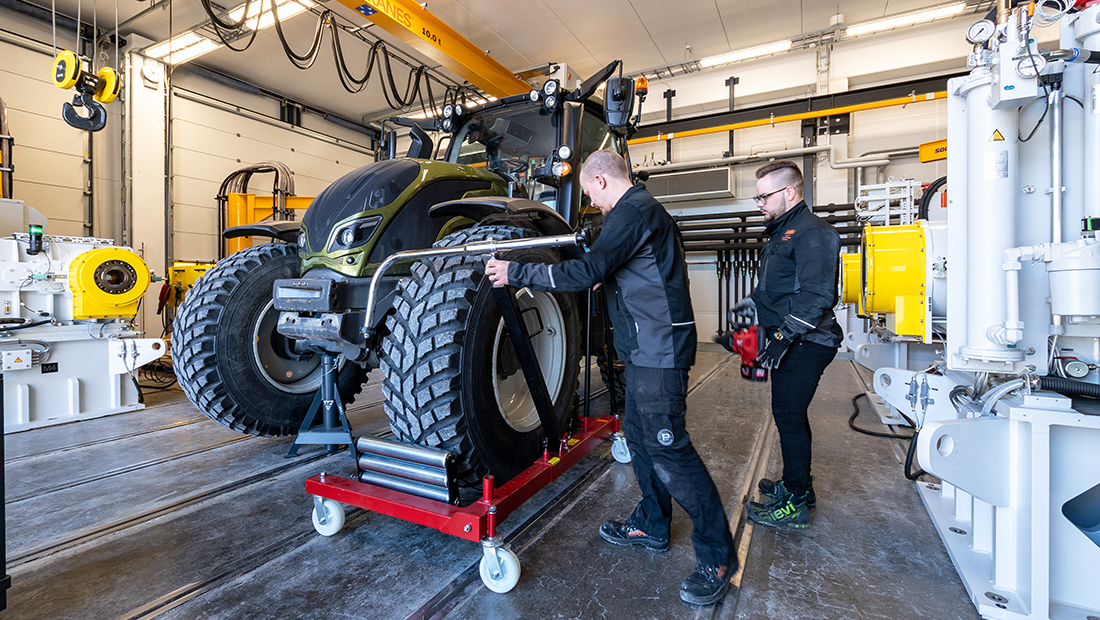Nordic Platform for Development of Autonomous Utility Vehicles
Intelligent Vehicles for Nature
The changing climate and tightened environmental legislation are guiding the vehicle manufacturers to develop ecological and low-emission transportations and utility vehicles. Switching from the combustion engines to hybrid and electric vehicles decreases the emissions of a utility vehicle. At the NUVE-LAB there is a controlled environment for researching, developing and testing for semi-autonomous and fully autonomous utility vehicles.

Diminishing the Impact on the Environment
The most significant impact on the environmental effect of a utility vehicle is how effectively the vehicle is used. The efficient use of the vehicle shortens the working and running time. It will increase the production capacity of a vehicle and decreases the number of vehicles needed. The efficient and correct usage of a utility vehicle not only increases the production but also lengthens the mileage of the vehicle. The correct usage keeps the vehicle in better condition and decreases maintenance and repairing costs. The driver of the utility vehicle has the most essential impact on how effective the vehicle is and how it corrodes. Semiautonomous and fully autonomous utility vehicles resolve the problems arisen from the driver’s fatigue or lack of competence.
Ground related industry is essential in the North. Agriculture, forestry, mining and maritime industry will need new sustainable solutions that are environmentally wise, safe for the environment and for the drivers in different working conditions. It is important to strengthen the economy and maintain the employment level but also protect the fragile nature of the North. These goals challenge the utility vehicle manufacturers and developers to enhance the safety of the vehicles from the standpoint of the nature and the driver.
Hybrid and Electric Motors for Utility Vehicles
The NUVE-LAB has the Nordic platform for research, development, testing and innovation of autonomous heavy-duty vehicles. The platform is also available for the use of graduate and higher education.
In the northern Sweden, Norway and Finland, forestry, agriculture, mining and logistics are key industries providing numerous job opportunities and regional economic growth. These industries rely on heavy-duty vehicles in several process steps for example harvesting, forwarding, loading, transport, plowing and seeding, and continuously need to improve their economic, environmental and social sustainability in order to stay competitive.
Hybrid and electric motors, autonomous vehicle technology and sensor technology are taking over utility vehicle markets. In order to deepen knowledge and boost capacity for new technology adaptation for companies and RDI organizations in the North, the networks of established research and monitoring cooperation should be connected and made more effective.
The cooperative virtual platform for the universities and research centres contains group technologies, virtual modelling of the actual environments and existing laboratories that are connected to development of utility vehicles.
There is a VR environment using data from actual working environment, to build a digital twin for the movement technology of the vehicles and creating the interface between Mobilab and the VR system in the NUVE-LAB. The laboratory enables building an interface between the measurements and the VR system. The methodology of the working platform has been validated in maritime logistics pilot at the Narvik Port in Northern Norway.
The controlled environment for researching, developing and testing for semi-autonomous and fully autonomous utility vehicles was developed in the NUVE RDI project.